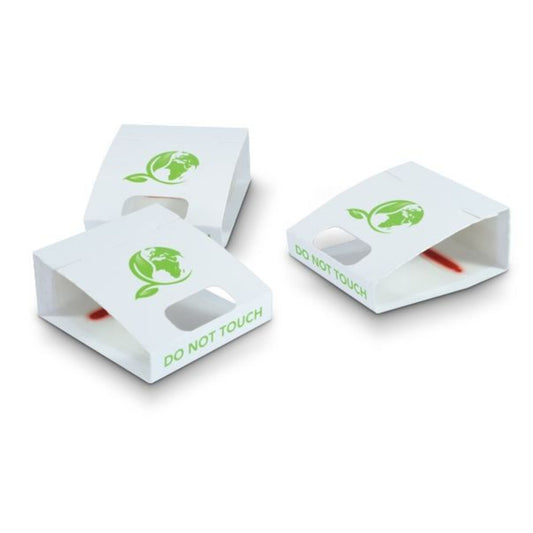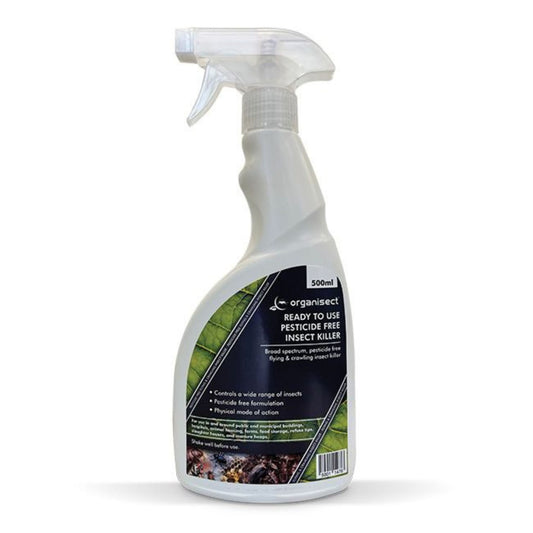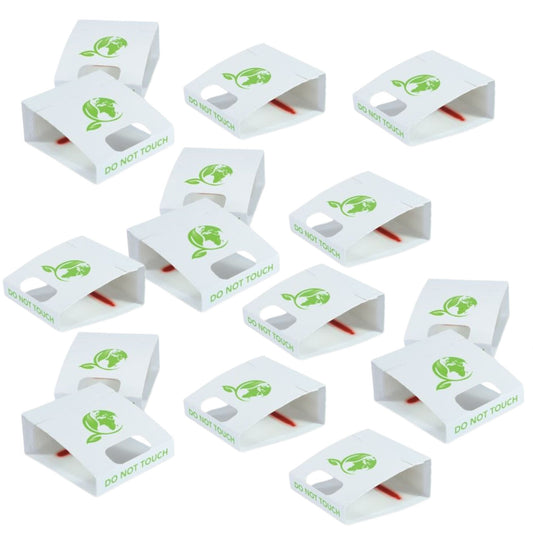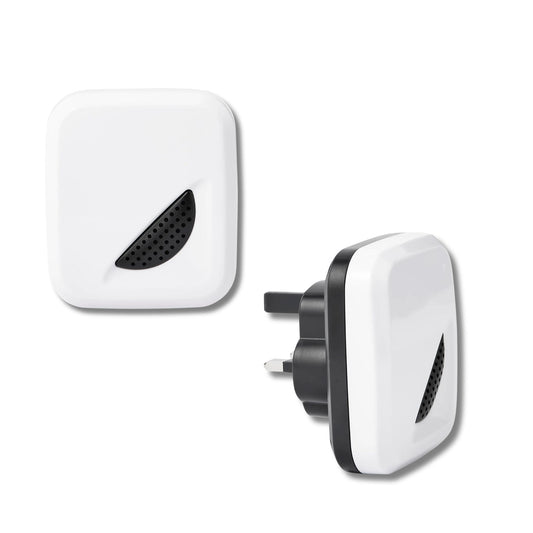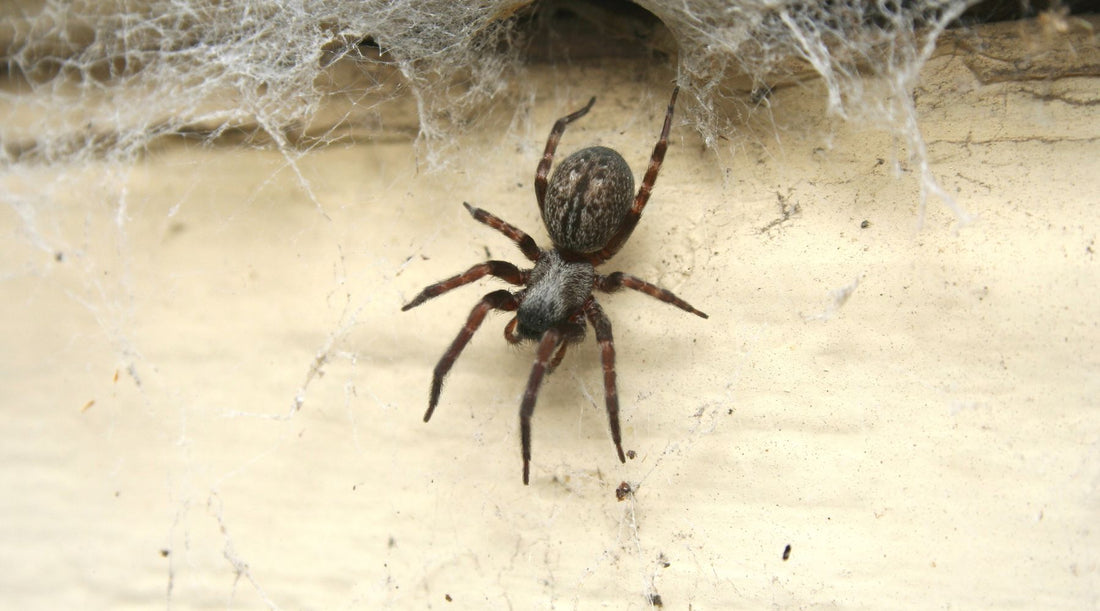
Expert Guide on How to Get Rid of Spiders Yourself
Share
Finding spiders in your house or garden might be more than just an annoyance. Although the majority of native spider species in the UK are harmless, many people find them quite uncomfortable. In certain more extreme circumstances, an infestation can indicate a more serious problem.
Thankfully, it is possible to control spiders yourself without using expensive pest controllers. To keep your house safe and comfortable, follow these easy-to-follow instructions on how to recognise, avoid, and get rid of spiders.
What Are Spiders?
Spiders are members of the arachnids class. This includes joint-legged invertebrates such as scorpions, ticks and mites. Spiders and other arachnids are distinctly different to insects. They have eight legs instead of six, and two main body segments instead of three. The two body segments of a spider are the cephalothorax and the abdomen.
There are hundreds of species of spiders in the UK. They come in various sizes and colours, but most common UK house spiders are small to medium-sized and typically brown or grey.
Spider Behaviour
You may be surprised to learn that spiders are primarily nocturnal creatures. This means they are most active at night and prefer to stay out of sight during the day.
Spiders can be great for controlling the population of pests in your home. This is because they like to feed on insects such as flies. Spiders are well known for spinning webs to catch their prey. However, there are some species of spiders that actively hunt without webs. Spiders prefer dark, undisturbed places such as basements, attics, and storage spaces.
Identifying Signs of a Spider Infestation
Always look out for the signs of a spider infestation as detecting them early can help you resolve the situation in less time and with less cost. Here are the key signs we experience and recommend you look out for:
Physical Sightings
Spiders are often seen scurrying across floors or walls, especially during the night or early morning. You may also find them on the walls and ceilings or in rarely accessed parts of your rooms. Common areas include corners of rooms, closets, and bathrooms.

Spider Webs
Spider webs are one of the most obvious signs of a spider infestation. Different species create different types of webs, ranging from messy cobwebs to intricate orb webs. Look out for webs in the corners of rooms, behind furniture, in undisturbed areas and in basements or attics.
Spider webs can last a long time even if attended because they contain bacteria metabolising nitrogen inside. This makes them especially resistant to rot. This means that they can last several weeks or even months because they start to decay. It can take around a year for the silk to degrade completely.

Egg Sacs
Spider egg sacs are small, white, and silk-wrapped balls usually found attached to webs, hidden in dark corners, or under furniture. Each sac can contain up to hundreds of eggs. As spider eggs can hatch in 2-3 weeks, a rapid increase in spider population is possible if not addressed.

Preventing Spiders
Prevention is the best strategy for managing spider populations in your home and the one you should always focus on first. Here are several effective strategies that we recommend:
Reduce Rubbish and Clutter
Spiders thrive in spaces that are cluttered or filled with rubbish. These spaces allow them to find plenty of food and hiding spots.
To prevent spiders from taking up residence it is important to keep your home tidy. Do this by regularly house-wide cleaning and decluttering storage areas, basements, and attics. Don't forget to regularly clean areas and spaces out of sight, such as above cupboards or kitchen units.
Seal Spider Entry Points
Inspect your home for cracks and gaps in doors, windows, and walls regularly. When you do find potential entry points, seal them off quickly to prevent spiders from entering. We recommend using weather stripping on doors and windows as well as caulk to fill in any gaps.

Remove Other Pests
You may know that spiders love to feed on other pests such as insects. This means that reducing the overall pest population in your home and garden will make it less attractive to spiders.
We recommend that you regularly clean surfaces to remove crumbs and other food sources that attract pests. Also, consider using insecticidal sprays if necessary.
Natural DIY Spider Control
We find that most people prefer natural methods to manage spiders. Typically, more powerful chemical solutions are seen as a last resort. Here are several non-chemical methods that we recommend to help control spiders:
Handpicking: If you're not squeamish, you can manually remove spiders. Find a small carton, Tupperware box or other box and invert over the spider. Once in place, quickly slide a piece of card between the carton and the surface to trap the spider. Once caught, release the spider outside. If possible you should release it some distance from your home to prevent it from returning.

Essential Oils: Spiders are sometimes put off and repelled by strong scents. The most common spider-repellent scents are peppermint, eucalyptus and tea tree oil. We recommend mixing a few drops of essential oil with water in a spray bottle. Once ready, spray it around entry points and areas where you have seen spiders or suspect them to be.

Diatomaceous Earth: This natural powder can be applied around entry points, along skirting boards, and in cracks and crevices where spiders may hide. It works by dehydrating crawling insects, reducing their food sources and deterring spiders from settling in your home.
Ultrasonic Insect Repellers: Plug-in insect repellers use ultrasonic sound waves to help deter spiders and other crawling insects. These devices are particularly useful for keeping spiders out of specific rooms or small homes.
Non-Toxic Traps – Sticky spider traps can help capture and monitor spider activity, especially in dark, undisturbed areas such as basements, garages, and behind furniture.
Natural Predators: Encourage natural predators of spiders, such as birds and bats to visit your garden to keep the spider population in check. Some cats are also keen on eating spiders so can be handy for this in and around the house.
Chemical Solutions for Spiders
If natural solutions are not effective you may wish to consider more potent chemical solutions. Before using any chemical products, make sure you take some time to learn about the ingredients and potential side effects. Always read and follow the instructions carefully as they can be harmful around people and pets. Don't do anything if you are uncertain.
Non-Toxic Insecticide Sprays: A natural insecticide spray can be applied to corners, cracks, and crevices where spiders hide. This option offers an effective way to deter and eliminate spiders while minimizing exposure to harsh chemicals.
Residual Insecticidal Sprays: For severe infestations, stronger insecticidal sprays may be required. These should only be used as a last resort for DIY control, focusing on areas where spiders are known to hide, such as cracks, corners, and undisturbed spaces. Exercise caution and always follow the manufacturer's instructions closely to ensure safe application.

Cleaning and Repairing After Spider Infestations
After addressing any spider infestation, it's important to conduct thorough cleaning and repair:
Remove Webs and Egg Sacs
Use a vacuum cleaner to remove spider webs and egg sacs. Be sure to dispose of the vacuum bag outdoors immediately to prevent any eggs from hatching inside and for the spider population to return.
Clean and Disinfect
Wipe down surfaces and hard-to-reach areas. Vacuum regularly to remove any remaining spiders. Deter future infestations by removing hiding spaces and food sources.

When to Use Professional Pest Control Services for Spiders
If your spider infestation persists despite your best efforts, you may wish to call in pest control professionals. Pest control services cost money however they can offer more potent solutions and customised advice. This may ensure your infestation is handled quickly and effectively.
Final Thoughts
By implementing the strategies outlined in this guide, you can manage and prevent spider infestations in your home.
Remember, early identification and prompt action are key to controlling spiders in and around your home. Initially, we recommend regular cleaning, reducing clutter and natural control methods to address spiders. If these methods do not yield results quickly enough, consider using chemical solutions or seeking professional help. Start taking control of your home to maintain a safe, spider-free environment.
At PestBuddy, we're here to empower you with effective, fast, easy-to-use DIY spider control products. Explore our range of products to take control of your pest problems with confidence.


